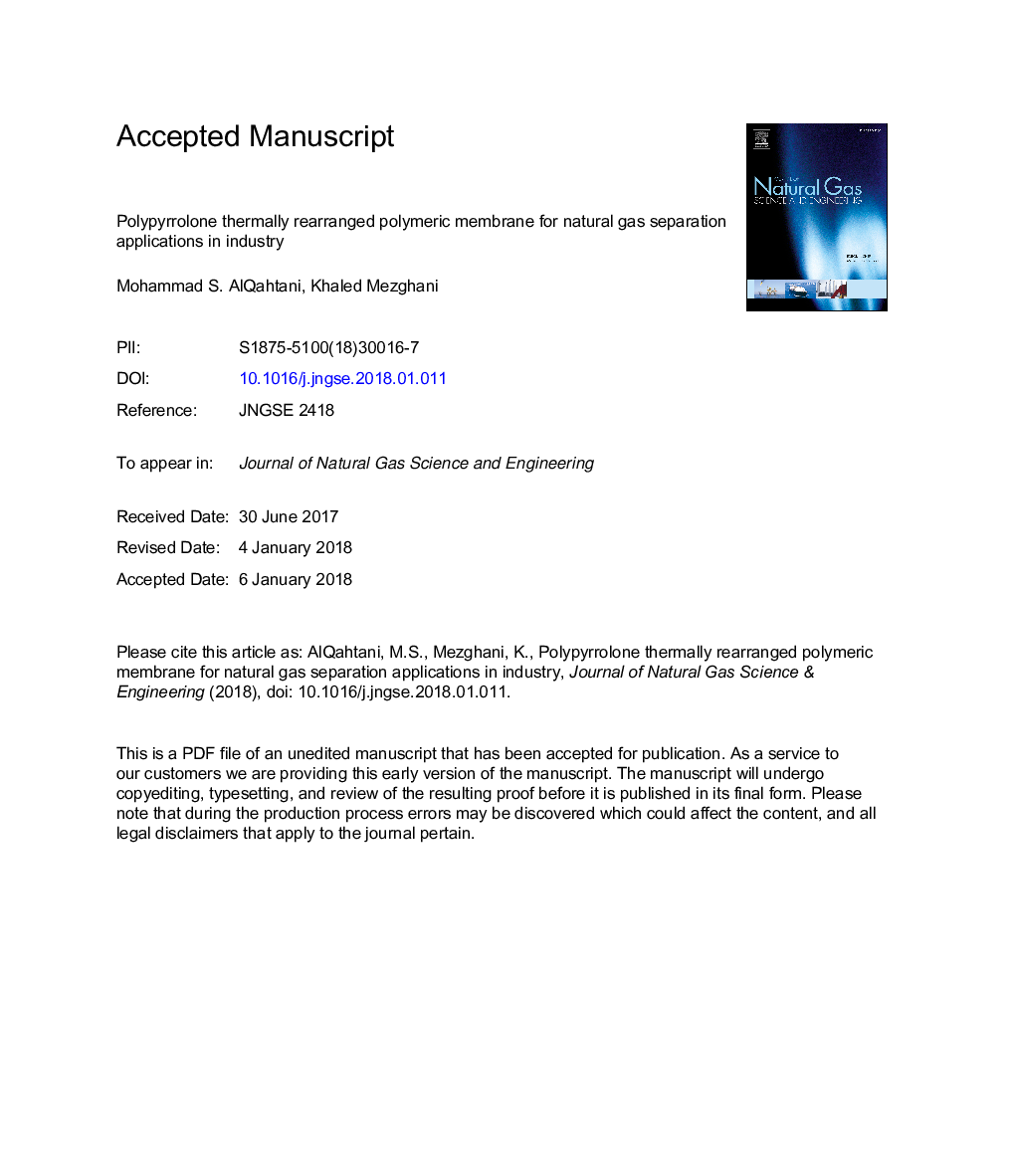| Article ID | Journal | Published Year | Pages | File Type |
|---|---|---|---|---|
| 8128358 | Journal of Natural Gas Science and Engineering | 2018 | 28 Pages |
Abstract
The gas permeability performance of thermally rearranged polypyrrolone (PPL-450) membranes have been experimentally evaluated under similar industrial conditions of gas mixtures, pressures, and stage-cuts. The membranes were synthesized from 4,4'-(hexafluoroisopropylidene) diphthalic anhydride (6FDA) and 3.3â²-diaminobenzidine (DAB). The thermal treatment of the PPL-450 was accomplished under vacuum at 450â¯Â°C. Several gas mixtures (binary, ternary and quaternary) were utilized to study the performance of the PPL-450 membranes for CO2 removal and helium recovery from natural gas streams. The quaternary feed gas-mixture was composed of 59% CH4, 30% N2, 10% CO2 and 1% C2H6, which represent a low quality natural gas. Three pressures (400, 600, and 800 psig) and five stage-cuts (1.2, 2.8, 4.2, 6.4, and 9.8%) were considered for the study. It was observed that the permeability values of all gases were decreased for mixed-gas experiments when compared to that of the single-gas permeability. On the other hand, CO2/CH4 permeability ratio was increased from 29, for pure gas, to 45 for quaternary gas-mixture. Likewise, the He/CH4 permeability ratio was increased from 33, for pure gas, to 46 for ternary gas-mixture. Furthermore, at 800 psig and 9.8% stage-cut, PPL-450 was able to remove 80% of CO2 from the quaternary gas-mixture. In another study of a very dilute helium-concentration (0.14%) more than 80% helium was recovered at 800 psig and 5% stage-cut. Moreover, in all gas mixtures containing CO2, the PPL-450 membrane demonstrated an outstanding resistivity to CO2-induced plasticization at high pressures.
Related Topics
Physical Sciences and Engineering
Earth and Planetary Sciences
Earth and Planetary Sciences (General)
Authors
Mohammad S. AlQahtani, Khaled Mezghani,
